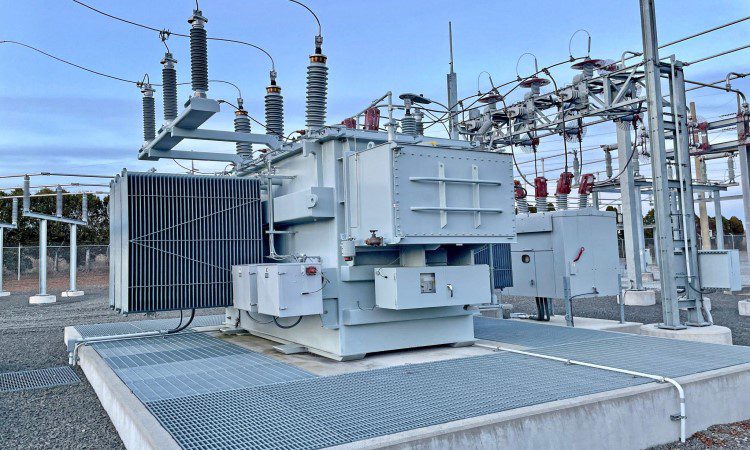Sierra Leone
Newton, Western Area Rural and Lungi, Port Loko District
Engineering
Feasibility Study
Engineering Design
EDSA / World Bank
- Complete
July, 2022
November, 2022
$75 Million (USD)
Have a project in mind?
Consultancy Services for Improvement of Electricity Supply in Urban Areas. Sierra Leone Distribution Project- power line optimization design with GOPA - Intec
- Addendum No.1 – Studies of Two PV and BESS Plants (Solar) Topographical and Geotechnical Investigation – Newton and Lungi
The government of the Republic of Sierra Leone has received financing from the World Bank toward the cost of the Energy Sector Utility Reform Project Additional Financing (ESURP AF). Under this project, the Government and EDSA (Electricity Distribution and Supply Authority) has requested IDA/WB to support for development of two independent PV (Photovoltaic) power plant and corresponding BESS (Battery Energy Storage System) in Newton area and in Lungi network which will support expanding the population’s access to reliable supply of modern energy services in Newton and Lungi.
Newton is a city in the rural district in the western area of Sierra Leone. The city lies approximately 20 miles (32 km) east of Freetown. Newton had an estimated population of 40,000. Newton is the third most populous city in the western Area, after Freetown and Waterloo. Considering growing demand in/around Newton and also existing 4.9 MW PV plant, Newton has been selected for development of another PV and BESS plant.

Lungi is a coastal town in Port Loko district in the northern province of Sierra Leone. The town lies approximately 40 miles (64 km) north of the district capital Port Loko. Lungi has international airport, many luxurious hotels and restaurants. Considering growing demand in/around Lungi, Lungi has been selected for development of PV and BESS plant.
The objective of this exercise/study is to assess the connection of two (2) PV plants and corresponding BESS into Sierra Leone electricity network. Two independent PV/BESS systems are considered:
- 30 MWac PV and 5 MVA (Mega Volt Amperes)/ 5 MWh (Mega Watt Hour) BESS system at Newton site.
- 10 MWac PV and 5 MVA / 5 MWh BESS system at Lungi network.
Studies of Two PV and BESS Plants (Solar) Topographical and Geotechnical Investigation – Newton and Lungi
GOPA-intec in Association with CEMMATS Group Ltd (the Consultant) were tasked to develop concept design for the connection of 30 MWac PV / 5 MVA BESS at Newton and 10 MWac PV / 5 MVA BESS at Lungi in Sierra Leone. The concept design represents a technical analysis and preliminary design of PV and BESS plant.
The Consultant has based this study on its own records which has been cross checked and updated during data verification process and previous study reports which were provided by EDSA.
The Consultant has also conducted site survey and topographical investigations for both Newton and Lungi PV and BESS plant project site.
The design report builds on the Consultant’s studies report for the two solar PV and BESS sites. The technical performance values of the grid impact study report were used as input into the design of the Newton and Lungi designs. The Consultant designed the BESS systems such that it is possible to expand the capacity if required.
The design report describes the designs for the Newton new 30 MWac and Lungi 10 MWac solar PV and BESS sites.
The location of the sites closes to the equator as well as the proximity to the ocean away from the inland desert, combined with the good solar irradiation and yield, makes the site beneficial for solar generation.
- Solar PV technology has evolved and refined over the years such that EPC contractors have a wide choice of equipment and “building blocks” to satisfy most technical design requirements.
“building blocks” to satisfy most technical design requirements.
The Consultant made use of this principle in compiling the functional concept design detailed in this report.
The benefit of this is that the modular nature of the design facilitates shorter construction times and a more efficient spares and maintenance practises.
Bespoke components were avoided where possible, as this leads to extra costs and prototype components, which in turn increases the risk of reliability of the entire plant.
The designs produced by the Consultant in this report serves as functional performance input for the EPC tender specifications
An (EMS) Energy management System is proposed for each site which will ensure the BESS and Solar field act as a single system and follow the load and demand profile of the grid at the connection point, thereby ensuring efficiency and battery life.
Conceptual layout drawings are produced for each site and positioned on the site map as well as a high-level bill of quantities generated for the major components. The technical performance criteria of these components are given in the report and would be used as minimum functional requirements for creating technical tender specifications.
